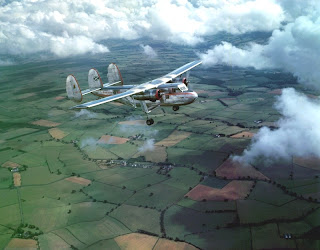

 After a wartime career in RAF Coastal Command, after which he took part in a number of air relief operations, John Blair joined Scottish Airlines and, later, Scottish Aviation, where he spent more than 20 years as the company’s chief test pilot. In that time he was involved in the development flying of the company’s best-known aircraft, before Scottish Aviation was absorbed into British Aerospace in 1978. Among these were the company’s Pioneer and Twin Pioneer, and the Jetstream and the Bulldog, originally designed by Handley Page and Beagle respectively, but taken over and developed extensively by Scottish Aviation.
After a wartime career in RAF Coastal Command, after which he took part in a number of air relief operations, John Blair joined Scottish Airlines and, later, Scottish Aviation, where he spent more than 20 years as the company’s chief test pilot. In that time he was involved in the development flying of the company’s best-known aircraft, before Scottish Aviation was absorbed into British Aerospace in 1978. Among these were the company’s Pioneer and Twin Pioneer, and the Jetstream and the Bulldog, originally designed by Handley Page and Beagle respectively, but taken over and developed extensively by Scottish Aviation. John Blair was born in 1916 at Cottingham on the outskirts of
There he worked until the outbreak of war, when he joined the RAF and trained as a pilot. Posted to Coastal Command he eventually became the captain of a B24 Liberator, flying on long-range anti-submarine patrols. He also qualified as a flying instructor and had a tour of duty training pilots in
Demobilised in 1946, Blair left Blackburn Aircraft — as the company had become — and entered the London School of Air Navigation, where he took his navigator’s civil licence. In 1947 he joined Scottish Airlines, based at
In 1955 he joined Scottish Aviation and was soon involved in the test flying of its own aircraft, as well as those it manufactured under licence or was in the process of overhauling. In the first category was Scottish Aviation’s first home-grown project, the single-engined Pioneer, which was bought by the RAF as a communications and casualty evacuation aircraft. From 1956 he was involved in the development flying of the company’s second design, the Twin Pioneer. A rugged twin-engined short takeoff and landing general purpose aircraft, the “Twin Pin” again found its best customer in the RAF as a troop and paratroop carrier, though Blair also tested it in air ambulance, freight transport, photographic survey and supply-dropping versions, in which it served a number of other operators in 20 countries.
In 1970 the production rights of the Bulldog, a single-seater light aircraft design from Beagle Aircraft, were acquired by Scottish Aviation after Beagle went into receivership. An intensive marketing campaign, launched with the RAF and other customers in mind, involved a great deal of development and demonstration flying, and Blair flew the Bulldog for several successive summers at the Paris and Farnborough airshows.
A second major project taken over by Scottish Aviation was the Jetstream twin-engined short-haul airliner, whose production was taken over by Scottish Aviation in 1973 after its design company, Handley Page, had gone into receivership. But before this could happen, Scottish Aviation needed to lay its hands on a Jetstream for evaluation purposes.
As it happened the only available model was in the
Blair retired as chief test pilot in 1979, by which time Scottish Aviation had become a division of British Aerospace, and the Bulldog and the Jetstream designated BAe aircraft. He continued to work for the company’s marketing division and also to fly, often taking to the air in a Bulldog.
He was awarded the Queen’s Commendation for Valuable Service in the Air in 1974, and in 1979 received the R. P. Alston Medal of the Royal Aeronautical Society for his contribution to the development of the Bulldog.
His funeral in